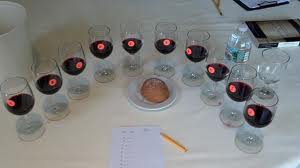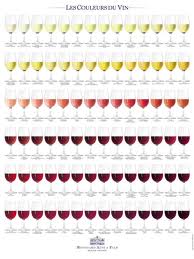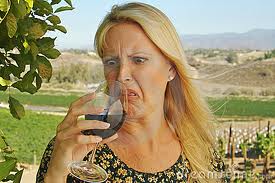Wednesdays, at Signaturewines.com, will be devoted to discussing various wine reviews while also attempting to empirically describe and rate the wines we review. We intend to engage in these reviews in an unbiased and objective fashion. Since we believe that wine expresses itself much like art, where it is said that beauty lies in the eyes of the beholder, so we must recognize that like art, the beauty and intrigue of a particular wine lies, after all, in the “Palate of the Taster".
“Empiricism” is defined as a theory of communicating knowledge primarily from measurable sensory experiences. So, how then are wines “rated” in an empirical fashion? 
Applying empirical methodologies upon subjective experiences like our human sensory experience of evaluating wine can assist us in describing the experience to others without their need to taste that particular wine themselves in order for them to form an expectation of the particular experience prior to the reality of their experience. We shall therefore seek to describe a wine in terms of objective measurements so as to convey both the real and qualitative characteristics of a wine-tasting experience.
This article will discuss one of the earliest wine rating systems established in the United States. This was a “point scale system” established in 1959 at the University of California, Davis, by Dr. Maynard A. Amerine. Dr. Amerine (1911-1998) is revered as the pre-eminent Professor of Enology, who, along with his staff, created a 20-point system that was used as a guide to describe and rank the large number of experimental wines that were being produced at the university.
Dr. Amerine's system, commonly referred to as "The Davis System" assigns a certain number of points to each of ten distinct categories. These points are then totaled to obtain an overall score for a particular wine.
The ten specific categories of appraisal are: Appearance, Color, Aroma, Bouquet, Volatile Acidity, Total Acidity, Sweetness/sugar, Body, Flavor, Astringency, and General Quality.
Appearance (2 points) - A score of 2 points is given if the wine is brilliant, with no dullness, murkiness, or particles of sediment. If it is clear, but not exhibiting flashing with light reflections, the wine receives 1 point. If the wine is full or cloudy it gets 0.
Color (2 points) - Desirable colors for white wines are varying shades of yellow, gold, or straw. Flaws are any amber tones, which indicate oxidation. A rosé wine can be a true pink, or by reason of the origin of the source of the grape, may be tinged with deeper red or orange hues. Overly violet tints, brown tints, or tints of amber or deep red would be considered faults. The color of red wines depends greatly upon the variety of the grape. Pinot Noir may be light enough to verge on transparency. Cabernet or Zinfandel will be deep red. Newer or younger wines will often have blue-purple edges, as older wines will show bronze edges. Two points given if ideal; one point is given if mild color flaws are present not due to grape variety or grape origin. Zero points given when wine exhibits severe color flaws.
Aroma and Bouquet (4 points). Aroma describes the sensory impression arising from inhalation through the mouth and sinus chimneys. Bouquet describes the fragrance detected by inhalation through the nose. Either may be vinous, smelling like wine, but without any grape variety characteristics. The intensity may be light, medium, or high. Negative factors are odors that can be described as alcoholic, excessively woody, moldy or corked. Deduct points according to the degree that the negative factors impact your perception of the aroma and bouquet.
Volatile Acidity (2 points) - This is the enologist’s term for “vinegary-ascensence.” Does the wine smell of vinegar? If not, a score of 2 points is given. A slight vinegar smell will rate 1 point. If the wine smells of vinegar it rates 0.
Total Acidity (2 points) - Acidity can be “felt” in the mouth and/or around the edges of the tongue. Acidity can be described as wine's refreshing zing. If low or entirely absent, the wine is flat, flabby or soapy. It can also be too high providing the taster with an unpleasant or overpowering sharpness. Deduct points accordingly.
Sweetness/sugar (1 point) - Sugar and total acidity go hand in hand together. Is the wine balanced? If yes, score a point. If the wine is overly sweet, or not set for the wine's varietal type, this is considered a fault; or, with reference to a different varietal type, the wine is faulted if it is overly “dry,” that is, absent any hint of sugar or sweetness.
Body (1 point) - This term refers to the wine's viscous nature identified as “mouth-feel,” or alcoholic strength. The wine should be balanced and pleasing the taster’s palate. Deduct a point appropriate to your perception.
Flavor (1 points) - The wine's flavor should correspond with and compliment the bouquet and aroma. Does the wine taste clean, fruity, full and/or balanced? The wine should not taste metallic, steamy, or foreign in character.
Astringency (2 points) - Tannins give a wine a sense of astringency (or bitterness), and so does the wood in which wine is aged. Younger wines of 1-5 years will taste rougher than older wines. The ideal is a taste of mellow softness, velvet, or roundness. Do not deduct points for a young wine that expresses natural tannins.
General Quality (2 points) - This category allows for subjective appraisal, adjusting the score on the basis of the wine taster's perception of the wine's performance. Score 2 points for a memorable wine, 1 point for an ordinary wine, 0 points for a less than or regrettable wine.
What do these scores mean? Below you will find the original "Davis system" score key:
17 – 20: Wines of outstanding characteristics having no defects;
13 – 16: standard wines with neither outstanding characteristics or defects;
9 – 12: wines of commercial acceptability with noticeable defects;
5 – 8: wines below commercial acceptability;
1 – 5: Completely spoiled wines.
If one multiplies the above scores by 5 then you can possibly compare this rating scale to the “Parker 100-point Scale” but we will leave discussion of the latter scale for another day and another article. I might also describe the above key in the following terms:
17 - 20 Wines with outstanding characteristics and having no defects times five equals 85 -100 (gold medal, double gold, and best of class awards); 13 - 16 Standard wines with neither outstanding characteristics or defects times five equals 65-80 (bronze and silver medals); 9 - 12 Wines of commercial acceptability with noticeable defects times five equals 45-60 (might be that bargain brand or special sale, good for cooking); 5 - 8 times five equals 40 or below and are Wines below commercial acceptability; 1 - 5 times five are completely spoiled wines.
I hope you found this article informative and interesting, if so please share and/or comment.

